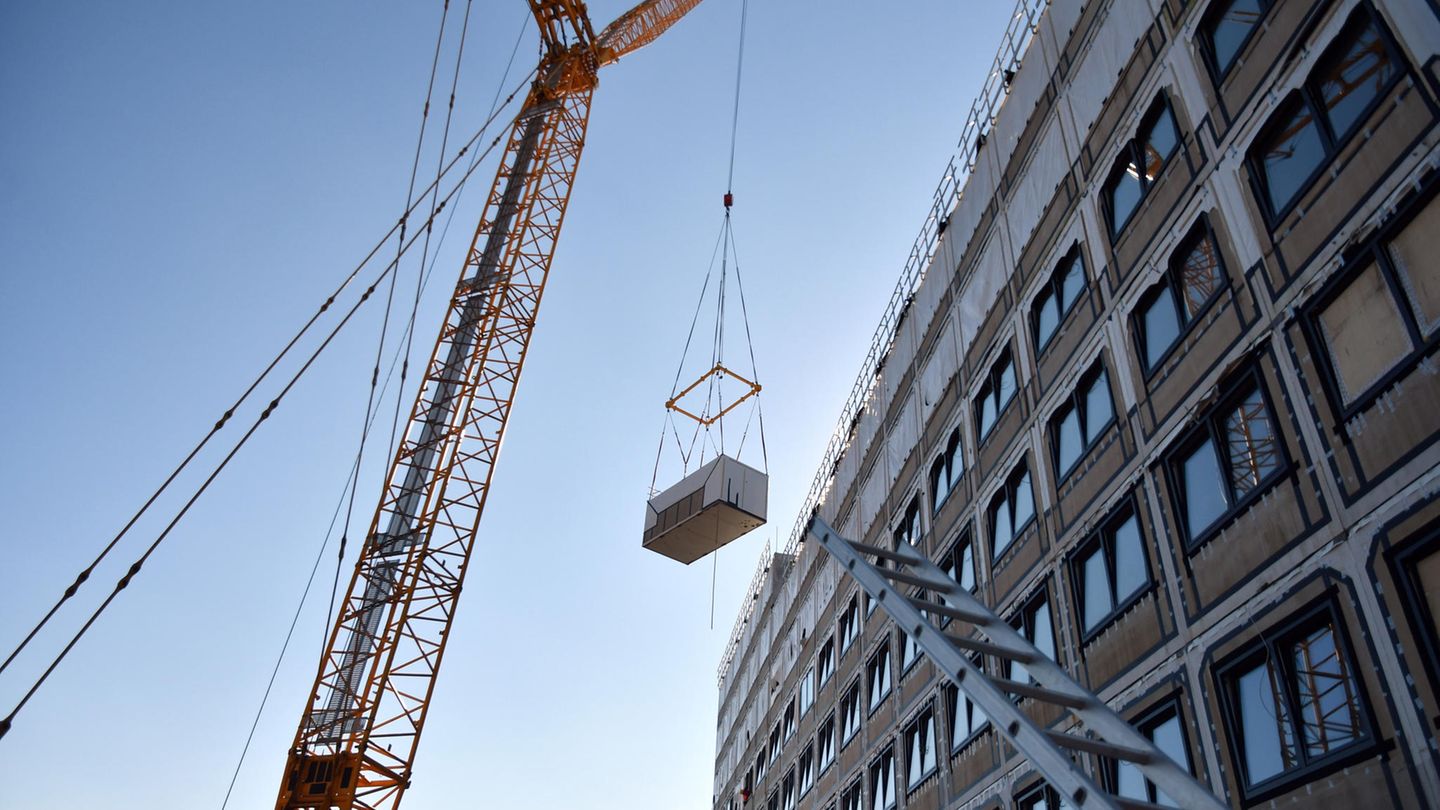The federal government has presented another program to promote construction. This time, energy efficiency doesn’t play such a big role. This is what you need to know about the new program.
The construction industry is not coming out of the crisis, new construction is stalling. This is one of the reasons why Building Minister Klara Geywitz is now presenting another funding program for new buildings: “Climate-friendly new buildings in the low-price segment”. It may be due to the tight budget situation or their belief in very targeted funding: anyone who wants to receive funding must meet strict requirements. In two areas in which politics has barely intervened so far.

This is original Capital branded content. This article is available for ten days on stern.de. You will then find it again exclusively on capital.de. Capital belongs like that star to RTL Germany.
But first: How is funding actually provided? A total of 2 billion euros is available for the program, 350 million euros from October 1st until the end of the year, the rest in 2025. The Kreditanstalt für Wiederaufbau (KfW) is offering loans of 100,000 euros with interest as part of the funding of 2 percent for a 35-year term and ten-year fixed interest rate or 1 percent for a 10-year term and fixed interest rate. This is significantly lower than current market construction loans.
To qualify for building subsidies, the apartment must be small and inexpensive
What do builders have to fulfill for this? Since the beginning of her term in office, Geywitz has repeatedly tried to stimulate a discussion about the increasing amount of living space, but now she is getting serious. Only those who adhere to certain area restrictions will receive funding.
- For a 1-room apartment there is a limit of 40 square meters.
- For 2 rooms, the area may be a maximum of 55 square meters.
- Three rooms must have a maximum size of 70 square meters.
- A 4-room apartment can be a maximum of 85 square meters.
- Each additional room can add up to an additional 15 square meters.
This is intended to limit the living space per person, which of course is only possible to a limited extent due to the definition based on the number of rooms. Theoretically, a single person can receive funding to build an 80 square meter four-room apartment.
The second unusual requirement: construction costs are limited. However, there is no static maximum amount; it depends on various factors such as type of heating or location. According to the ministry, the limits are based on the average construction costs for residential buildings in Germany with a simple standard. You can use one to find out whether your own construction costs are within the limits. The idea: The limitation forces builders to forego luxury furnishings. As a result, the apartments will be offered at lower prices, including for rent. Here, too, the construction costs are a detour to the actual goal: Just as the federal government cannot dictate how many people live in a subsidized apartment, it is also not allowed to specify maximum rents for building subsidies. Tenancy law is a state matter.
The limitation is also intended to increase the productivity of the construction industry – this is also an issue that has been on the construction minister’s mind for some time. This means that construction companies should use efficient construction methods – for example modular construction – in order to keep construction costs low.
It should also be climate-friendly
Meanwhile, the third condition could drive up construction costs: the cheap and small apartments should be climate-friendly. In contrast to previous programs, it is not just the energy consumption during “operation”, i.e. living in the house, that counts, but the entire “life cycle”, i.e. also the materials used, for example.
The house can therefore be built to the Efficiency House 55 standard (which has been mandatory since the beginning of the year anyway), but must save as many emissions over the entire life cycle as a house according to the Efficiency Standard 40 (i.e. with stricter requirements). This means, for example: A house could be less well insulated if it uses recycled building materials. Energy consultants should implement this balancing. Anyone who builds a little more sustainably (i.e. according to the EH40 standard) can even receive 150,000 euros instead of the 100,000 euro loan amount from 2025.
The Minister of Construction hopes that the program will support 150,000 residential units. For comparison: the “Climate-Friendly New Building” program supported 83,000 residential units from March 1st last year to September 29th this year. But it is not entirely trivial to design funding programs in such a way that there is no more demand than budget and at the same time the entire budget is used. The ministry reserves the right to adjust the interest rate if fewer applications for funding are received due to the strict conditions.
Source: Stern




